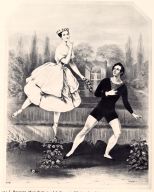 Bourgeois Masculinity
Bourgeois Masculinity
The nineteenth century saw the rise of the middle classes and the increased influence of bourgeois values. The ideology of “separate spheres” defined middle-class women’s role in relation to the family and the home, while men circulated and conducted business in the public spaces outside of the confines of the household (Nead 1997).
Middle-class businessmen defined their role not only in opposition to
women but also made efforts to distinguish themselves from the aristocracy.
The claims of the latter to the heredity honours of noble lineage were
no longer considered valid in the world of the businessman, where hard
work and industry were the true signs of manly virtue. In other words,
middle-class masculinity was centered on the notion of “self-made
man.” Setting out his criteria of ideal man of business, Charles
Morrison (1854) wrote:
"
[He is] a man sparing in words – close in disposition – often
intuitively seeing what is best to be done without being fluent in explaining
to others his reason for doing it – wary in his choice in men – cautious
and balanced in his opinions – careful never to promise as much as
he is expected to perform – innovating in a gradual, practical, and
tentative manner – averse to tumult and verbal contention – willing
to work in obscurity for a result only to be realised after years of patience – instinctively
distrustful of everything showy and popular – and punctiliously correct
in the minutest pecuniary detail." (p. 126)